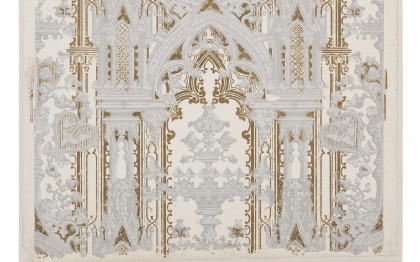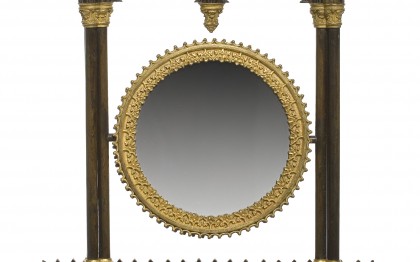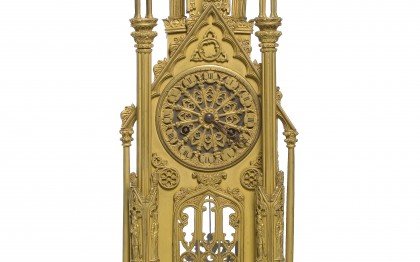'One day, a historian will tell the story of a curious illness of our time, the obsession with the Gothic. We are witnessing its earliest, ridiculous beginnings. Very early on, Mr de Chateaubriand, in Le Val aux Loups, near Sceaux, attempted a truly grotesque imitation.' Although the historian Jules Michelet showed little appreciation for the Gothic interiors created by the author of Génie du Christianisme (The Genius of Christianity), the fact remains that the fashion for so-called 'Cathedral-style' décor was one of the most creative periods for decorative arts.
The first examples appeared in French homes in the 1800s, and included the wood panelling from the reading room in the mansion of Madame Vanlerberghe. The trend really began to spread under the Restoration (1814-1830), as can be seen from the Gothic cabinet made for the Countess of Osmond circa 1817-1820. Under a regime attached to the values of the past, the singular extravagance of 'Cathedral-style' décors led to a real freedom of form.
The fashion reached its peak under the reign of Charles X (1824-1830), when the 'Cathedral' style could be found in all everyday objects, from furniture to ceramics, via wallpaper, glassware, jewellery, coverings and small bronze objects. Clocks were made to resemble cathedral façades and played on the similarity between a clock face and a rose window.
Under the July Monarchy (1830-1848), the relationship with the past took on a more scientific basis, which could be seen in the changes in décors. Gothic decoration was now not only grafted onto Classical forms, it also extended to structures. 'Cathedral-style' décor gave way to archaeological restoration.



